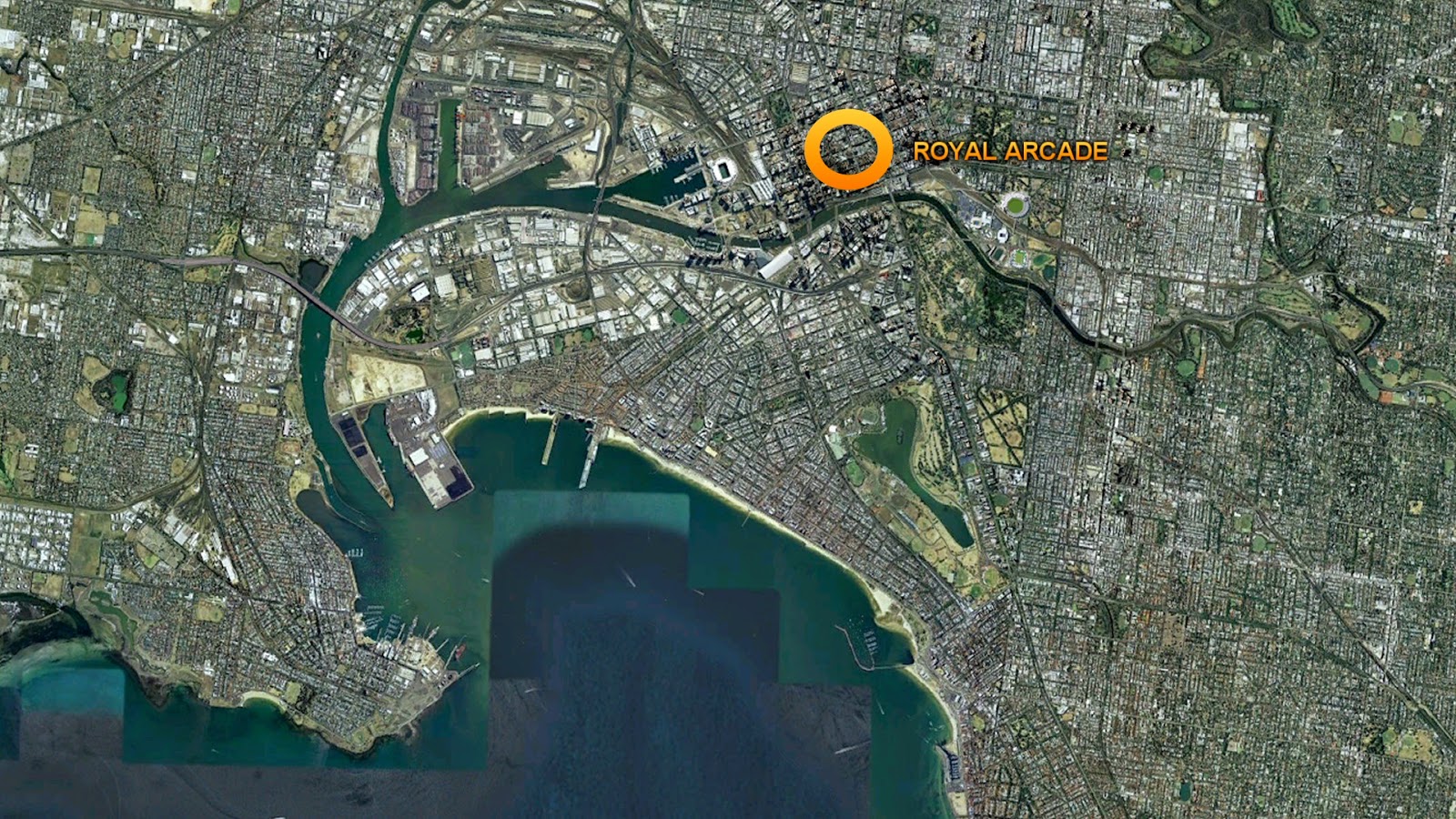Where in Melbourne Puzzle - April 2014.
THIS PUZZLE HAS BEEN REVEALED
DIFFICULTY LEVEL
 |
| WIM April 2014 Splash screen. |
...
Clue 1 - You have to walk there to see it run.
Clue 3 - When things were made to last - this clock was installed in 1892 and operates to this day.
Clue 4 - The clock has 2 bell ringers.
Solution - The picture is of Gog and Magog in Melbourne's Royal Arcade.
Take a walk down the Royal Arcade and you are drawn to the clock flanked by two giants. Gog and Magog. Thomas Gaunt & Co., clockmakers and jewellers, had been original tenants of the arcade and installed the clock in 1842.
Gaunt died in 1890 and the clock, though bearing his name on its black and gold face, is attributed to Frederick Ziegler. The pine figures were probably carved by Mortimer Godfrey in his Lonsdale Street workshop. Connected by wires to the clock which operates from a machine room above, they strike iron bells every quarter hour and are modelled on larger effigies in London's Guildhall.
Those effigies were erected in Guildhall 1708 to symbolise the conflict between the ancient Britons and the Trojan invaders.
 |
| Gog and Magog of London. |
Gog and Magog are names that appear primarily in various Jewish, Christian and Muslim scriptures, as well as numerous subsequent references in other works. Their context can be either genealogical (as Magog in Genesis 10:2) or eschatological and apocalyptic, as in Ezekiel and Revelation. They are sometimes individuals, sometimes peoples, and sometimes geographic regions. Take a pick. Goths, Celts, Russians, Jews, Mongolians, Khazars, and many of the European countries have been referred to as Gog.
The passages from Ezekiel and Revelation in particular have attracted attention due to their prophetic descriptions of conflicts said to occur near the "End times".
One legend tells of the giants Gog and Magog having been captured in battle by the Trojan warrior Brutus and chained to the gates of his palace on the site of Guildhall.
Carvings of Gog and Magog are kept in Guildhall and 7 foot high wicker effigies of them
(The Protectors of London) lead the procession in the annual Lord Mayor's Show.
According to another source, an early version of Gog and Magog were destroyed in Guildhall during the Great Fire of London and they were consequently replaced in 1708 by a large pair of wooden statues carved by Captain Richard Saunders.
These giants, on whom the current versions are based, lasted for over two hundred years before they were destroyed in the Blitz.
They, in turn, were replaced by a new pair carved by David Evans in 1953 and given to the City of London by Alderman Sir George Wilkinson, who had been Lord Mayor in 1940 at the time of the destruction of the previous versions.
Research and Image Links:
eMelbourne
Melbournedaily
Wikipedia
EndtimesAndCurrentEvents
Commons Wikimedia
This page was last updated 28th of April 2014.
A new puzzle will be posted on the first Monday of May 2014.







No comments:
Post a Comment